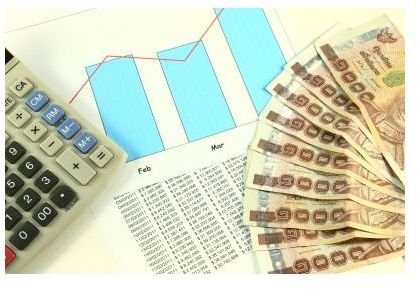Tips On How to Build a Trading Plan for Forex
Trading the currencies market requires carefully thought out trading plans to be successful. No savvy trader will disagree with that.
How many methods are there? The list goes on and keeps growing. There is no fixed plan that works all of the time in all situations. One strategy may work for a day, a week or a month depending on the timeframe in which you are trading, but then loses its usefulness. This leaves the trader to look for another one that is suitable for the current conditions.
Finding a trading plan is not hard and it’s necessary for successful trading, especially for traders who are just beginning. There are volumes of books written on the subject and many brokers’ websites and financial information sites have a plethora of educational material – let’s not forget the online disks and educational courses that are always for sale somewhere. Simulators abound that let a beginner or experienced trader practice trading and test trading plans in a trading environment that resembles closely, if not exactly, the actual forex market. These can be acquired for sale or for free on the websites of forex dealers and free financial sites. Usually you must open an account or take out a free membership to access them.
Of course, many beginning traders don’t want to put up the money or time for any of these. Playing with numbers and devising trading systems makes building a trading plan for forex an interesting and even a fun option. There are always adjustments to be made and new ideas to try.
Money Management
An integral part of any trading strategy is managing the money in the trading account. This doesn’t tell you when to make a trade but helps to manage the risk of losses from bad ones and shouldn’t be ignored. The financial streets are littered with broke forex traders who didn’t bother to exercise due diligence managing their money on trades, especially for the long-run. Here are a few things to remember regarding this:
- The most common advice is to only use speculative capital or what you can afford to lose. This is an amount that won’t affect your lifestyle should you lose all of it.
- It’s impossible to take profits 100% of the time. Try to keep the losses small so recovering with more trades isn’t insurmountable.
- What’s considered a good amount to be trading with is about 1% or 2% of your total equity. This leaves an 80% account balance for 20 losing trades (not uncommon) if 1% is at risk or 60% for 2%. More aggressive traders might use up to 5%.
Image: Grant Cochrane / FreeDigitalPhotos.net
Determine Your Time Frame
A trader should determine what kind of a timeframe he wants to use before beginning to trade. These are divided into three categories:
- Daytrader - completes his short-term transactions within a day.
- Swing trader - completes transactions within one to four days
- Investors - trade beyond the short-term timeframes of the daytrader and swing trader, often watching more than one chart to get a better bearing on what the price action has been doing.
When Should You Get Out of a Trade?
Setting stops, when to exit a trade, is a part of money management and many traders will agree it’s more of an art than an exact science. But there are some methods for this that does make life a little easier when trying to create a trading plan. They are:
Equity stop - this simple method has the trader risk only a small, predetermined percentage of his account equity on any one trade. The usual amount is 1% to 2%. Limits on a $10,000 account at 2% for a 10,000 unit mini lot and a regular lot of 100,000 units would be $200, (200 points) or $20 (20 points) respectively.
Chart stop - the more creative traders like to combine equity stop rules with signals from any of the large number of technical indicators that are available to them to devise chart stops. A classic example of this is the swing high/low point. Basically, this is just using the previous high of a trend within a timeframe as a stop for selling short, or using the previous low as a stop for selling long. The risk exposure of an order is usually measured by multiplying the difference between the stop and the entry point and multiplying it by the number of units in the order.
Volatility stop - this is a version of the chart stop that is based on volatility rather than price movements for setting stops. Indicators that utilize the charts volatility and trailing stops are used in a way that might avoid whipsaws that set off stops. Two indicators that are used for this kind of stop are Bollinger bands and the average true range (ATR). Wide stops might be set beyond the band widths as a measure for volatile charts in the case of Bollinger bands.
Margin stop - this is a strategy that utilizes the broker’s margin call as a stop. It requires that the trader divide his capital into 10 equal parts and then sends only 1/10th to his forex dealer to deposit into his account. The leverage that is offered by the dealer would increase the amount of units that the trader has control over, usually 100:1, and instead of trading with the entire lot and risk a margin call only a portion of it is used which gives him more trading room (lower margin requirement). This gives him a chance to make a number of potentially profitable trades without all of his capital being out on one bad trade. The account’s margin requirement would in essence become the stop for each trade. This is an interesting method for those who strongly dislike setting stops.
Fundamental Analysis
Knowing when to get into a trade is very important and analyzing a trade is a necessary part of any forex trading plan. The two kinds of analyses that are used are fundamental analysis and technical analysis.
Fundamental analysis - for stocks this involves looking at a company’s financials to determine if it’s stock is overpriced. For the currencies market this uses the same thinking but it is applied to whole countries for valuing their currencies. This type of analysis is usually used for long-term investing but there are short-term traders who do trade on daily news releases. Many free financial websites and dealers sites have economic calendars that show up-to-the-minute political and economic news.
Technical Analysis

Technical analysis involves using indicators that follow price movements and help traders to anticipate where the price could be going in the future. Its basic assumptions are:
- • All of the factors that affect a market are reflected in it’s price.
- • Prices have a tendency to move in trend.
- • History has a tendency to repeat itself. Human behaviour doesn’t change and is reflected in the capital markets in the form price patterns that can be identified on charts.
The indicators that are used:
- Trend lines
- Moving averages
- Oscillators
- Chart Patterns
A trend is just any marketable assets price movements in a consistent direction and can be delineated on charts using a straight line known as the trend line. Prices on market charts can rise or fall with a definite tendency to form trends. These help investors anticipate where the prices are going. Trend lines are drawn using the two lowest valleys along the graph for upward trends, and the two highest peaks for downward trends. Using both methods for any trend forms a price channel that contains the price movements. Their direction can be up, down or sideways. Profits can be taken at times by entering into a trade when prices are on or near one of the channel’s lines.
Moving averages (MA) are useful tools to be used with trend lines and other indicators. These smooth out the average price and volume movements on the charts emphasizing trends, and they can also help to determine support and resistance areas on the chart. Trend reversals can occur when the chart prices crossover a MA. The MAs will begin crossing over each other at different points during a trend reversal when more than one MA is used. A single crossover can be a signal for a major price movement or it can be meaningless (noise). Additional crossovers of other MAs help to confirm this.
Oscillators measures the rate-of-change in a price of a currency pair and are used for indicating overbought and oversold conditions. Oscillators are particularly useful for trading in range-bound market conditions when there is no trend. A typical oscillator like the three day Relative Strength Indicator consists of a center line and upper and lower margins that denote the overbought or oversold areas. This indicator uses an algorithm that utilizes up days and down days to calculate values that form a line that oscillates between the upper margin, usually set at 80 to 100, and the lower margin, usually set between 0 and 20. The currency pair is considered overbought when it enters the upper margin and oversold when it enters the lower margin. An overbought condition is considered a good signal to be selling and the opposite is considered for an oversold condition.
Recognizable chart patterns will occasionally form from price movements that can indicate trend continuations or reversals. Some of these are triangles (continuation), flags (continuation), pennants (continuation), head and shoulders (reversal), and double tops or bottoms (reversal).
Candlestick charts also show chart patterns but they have another distinct set of patterns that are characteristic of the way price movements within a time frame are rendered on them. A single candlestick shows the opening price, the high and low for the timeframe, and the closing price. One of their shortcomings is that they don’t show the exact price movements within a timeframe. They are interpreted as indicating the tug of war between the bears vs. bulls. Some of these are doji (usually indecision), piercing and cloud cover formations (reversal), harami formations (continuation), upside tasuki gap (continuation).
Image: Keerati / FreeDigitalPhotos.net
For a beginning or experienced trader, knowing how to build a trading plan for forex is crucial. He can create his own trading plan or choose from the many that are available to the public. Making money in foreign currencies requires utilizing a trading plan that the trader is comfortable with and that works for him and he should always have more than one for changing situations as there isn’t any single plan for all of them. Fundamental and technical analysis combined with careful money management are essential for this and can help a beginner get on the right path to profitable trading.
For more tips and strategies, be sure to check out the other items in Bright Hub’s Collection of Forex Trading Guides.
References
-
John Murphy, “John Murphy’s Ten Laws of Technical Trading,”
http://stockcharts.com/school/doku.php?id=chart_school:trading_strategies:john_murphy_s_ten_laLien, Kathy, “Forex: Wading Into The Currency Market,” http://www.investopedia.com/articles/forex/06/FirstStepsFX.asp#axzz1S6iM4nmz
Schlossberg, Boris, “Forex: Money Management Matters,” http://www.investopedia.com/articles/forex/06/FXMoneyMgmt.asp#axzz1S6iM4nmz,
Mitchell, Cory, “Create Your Own Trading Strategies,” http://www.investopedia.com/articles/trading/10/create-trading-strategies.asp#axzz1S6iM4nmz
Kaeppel, Jay, “4 Types Of Indicators FX Traders Must Know,” http://www.investopedia.com/articles/forex/10/indicators-fx-traders-must-know.asp#axzz1S6iM4nmz
incrediblecharts, http://www.incrediblecharts.com/
